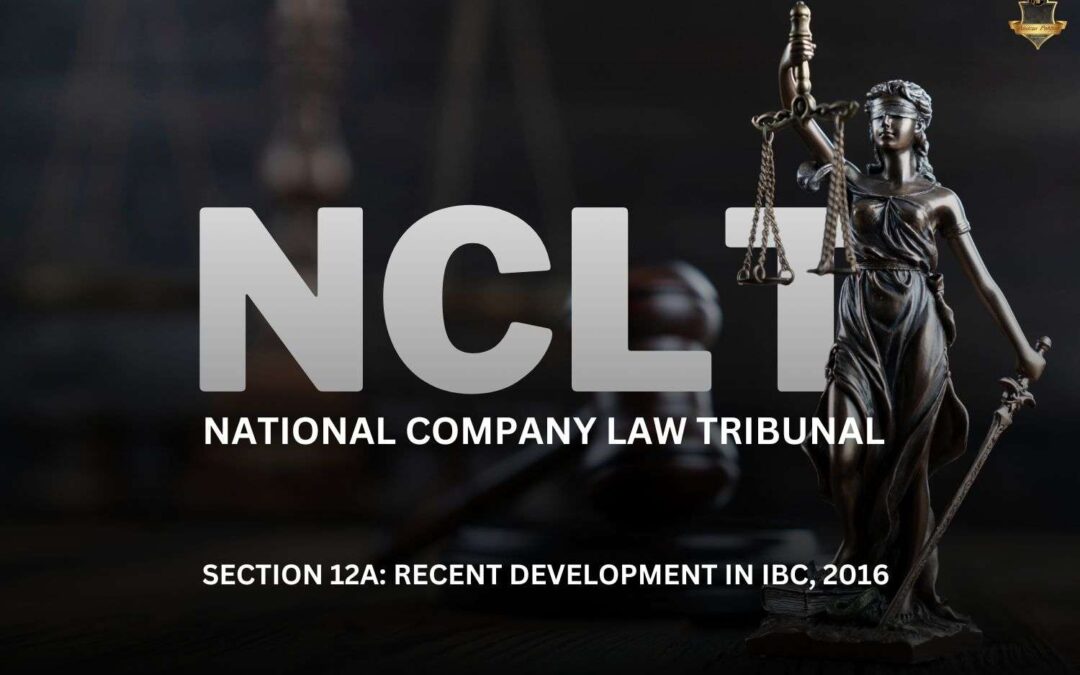INTRODUCTION
Many creditors, whether operational or financial, may file an application for initiation of the corporate insolvency resolution process before the adjudicating authority, which is NCLT. The Insolvency and Bankruptcy Code, 2016.
Thus, it became of utmost importance to introduce the withdrawal process as well to strengthen the objective of the Code. Through a landmark judgment named Uttara Foods & Feeds (P.) Ltd v. Mona Pharmachem [2017], the Supreme Court also felt the need for amendments in the insolvency and bankruptcy code.
INSERTION OF SECTION 12A IN IBC, 2016
After agreeing to an out-of-court settlement, the parties in Uttara Foods & Feeds (P.) Ltd v. Mona Pharmachem [2017] moved to the National Company Law Appellate Tribunal (NCLAT) to withdraw their application for Corporate Insolvency Resolution Proceedings. But the Appellate Authority rejected the withdrawal by declining to accept the appeal in accordance with Rule 11 of the NCLAT Rules, 2016 which talks about the inherent powers of the tribunal. The parties brought up the same problem when they addressed the Supreme Court in response. By using its inherent authority under Article 142, the Supreme Court granted the application’s withdrawal. In addition to approving the withdrawal.
According to rule 8 of the AAA Rules, the NCLT may permit the withdrawal of an application if the applicant asks it prior to admission, as noted in the Insolvency Law Committee’s March 2018 report. Nevertheless, neither the CIRP Regulations nor the Code contain any clause that allows for withdrawal after CIRP application admission.
GIST OF SECTION 12A OF IBC, 2016
As per section 12A of the Code, once the application for initiation of corporate insolvency resolution process is accepted under section 7, 9, or 10, the adjudicating authority that is whether NCLT or NCLAT, may allow the withdrawal of application. It further states that when the application is made by the applicant for the withdrawal it must be approved by the voting share of Ninety Percent of the committee of creditors.
As a result, under specific restrictions and in accordance with the Adjudicating Authority’s guidelines, an insolvency application may be withdrawn with the consent of the CoC through the use of Section 12A and Regulation 30A. This clause aims to lessen the burden on the NCLT and promote resolution outside of the official insolvency procedure.
CHALLENGE TO THE CONSTITUTIONAL VALIDITY OF SECTION 12A
The amendment made in Insolvency and Bankruptcy Code, 2016, erupted the criticism from many. Thus, the amendment was constitutionally challenged in the case named Swiss Ribbons Pvt. Ltd. v. Union of India, 2019, Supreme Court of India. The parties who challenged the amendment contended that Section 12A is giving a high amount of power to the committee of creditors for withdrawal which is unconstitutional and violative of section 14 of the Indian Constitution.
The court stated that the ILC Report explains this high threshold by saying that all financial creditors must work together to permit such a withdrawal, since generally speaking, an omnibus settlement involving all creditors ought to be engaged into.
Furthermore, it is evident that the committee of creditors does not have the final say in matters pertaining to Section 60 of the Code.
Thus, the honourable Supreme Court gave a landmark decision in this case by making the section 12A constitutionally valid which was inserted through amendment in the year 2018.
WHY INSERTION OF SECTION 12A IN CODE IS NECESSARY
- As it is evident that the authorities and tribunals are flooded with cases which are still pending from many years. Thus, the clear process of withdrawal of application for initiation of corporate insolvency process opens the door of negotiations between the creditors and corporate debtor.
- It thus, reduces the burden upon the authorities and tribunals.
- A common outcome of ongoing bankruptcy procedures is asset depreciation. Section 12A offers a chance to preserve the company’s worth via extrajudicial settlements.
- It empowers the creditors by providing them the power to approve or reject the withdrawal.
Out of court settlements with the help of experienced corporate lawyer is a speedy and cost-effective method.

